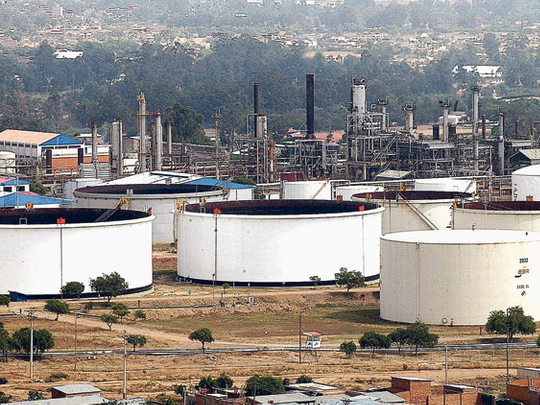
Singapore: Oil rose on Thursday to within a few cents of five-month peaks, supported by expectations that central banks will ease monetary policy to shore up sluggish economies and falling US fuel stockpiles.
November US crude rose 67 cents to $83.90 a barrel by 0645 GMT. ICE Brent added 56 cents to $85.62.
The prospect of a second round of expansionary monetary policy, known nowadays as quantitative easing stage two, or QE2, hangs upon key U.S. employment reports, with weekly statistics due on Thursday and more comprehensive monthly data on Friday.
"Whatever the data is, the market may continue to go to the upper side until early November," said Ken Hasegawa, a commodity derivatives manager at Japan's Newedge brokerage, referring to the Fed's next policy-setting meeting on November 2-3.
"It's not easy to develop a short position at the moment because the trend is higher."
A negative jobs reading on Friday could reassure investors the U.S. Federal Reserve will take action to reinvigorate the economic recovery, Hasegawa said.
Private employers in the U.S. cut 39,000 jobs in September, the largest monthly loss since January, ADP employment data showed on Wednesday, compared with forecasts for a rise of 24,000 jobs. The ADP private report is sometimes seen as a preliminary indication for the monthly government figures. A sinking greenback, linked to the expected inflow of fresh dollars into the U.S. economy, helped send front-month U.S. crude to an intra-day peak of $84.09 a barrel on Wednesday, the highest price since May 4.
"The US dollar has continued falling and this kind of trend will be extended forward," Hasegawa said, increasing the relative purchasing power of dollar-denominated oil for holders of other currencies.
MIXED INVENTORY REPORT
Adding to the effect of the weaker dollar, US gasoline inventories fell more than 13 times as much as expected last week, government statistics from the Energy Information Administration showed on Wednesday, down 2.65 million barrels in the week to Oct. 1.
Distillate fuel supplies, including heating oil and diesel, declined 1.12 million barrels.
But U.S. crude inventories rose by a larger-than-expected 3.09 million barrels as the nation's refineries cut utilisation rates, the EIA said.
"The report failed to confirm the recent improvements in the U.S. oil market, suggesting that the current price strength is mainly driven by improved macro sentiment and strong technical momentum," Stefan Graber, a commodities analyst with Credit Suisse in Singapore, said in an e-mailed note to investors.
Stocks at the Cushing, Oklahoma, pricing hub for benchmark West Texas Intermediate (WTI) crude rose for the first time in nearly two months and were up almost 750,000 barrels last week at more than 35 million.
The prospect of a broader strike hitting France's refining operations was also supportive for European oil product prices. Workers at the country's refineries may join a walkout at a key oil port on Thursday.
Asian stocks edged up to a two-year high on Thursday, supported by resource-related shares, but gains were capped and the U.S. dollar held near a 15-year low against the yen.
The northern part of the Houston Ship Channel reopened to inbound and outbound ships Wednesday for the first time in three days after workers cleared dangling power lines and an electrical tower leaning over the waterway, the US Coast Guard said.












